Indian Food is Not Just Curry and Nan
When I went to college, three hours south of Chicago, I first saw grits. I figured this breakfast dish was the oatmeal for southerners. When I moved to Texas, the big black barbeque pits in people’s yards took me by surprise. I’d seen a few small Weber grills on people’s balconies or patios in the past, but never anything so large that could almost fit an entire piglet. The preference for eating brisket with white bread in San Antonio floored me, as did enormous chicken legs on a stick that reminded me of the cave men.
But, for the most part, eating in the United States is pretty much the same anywhere you are. In this country of immigrants, we are blessed with having a potpourri of restaurants serving up cuisine from all corners of the world.
Being a vegetarian most of my life, I’ve always been attracted to foods of those countries that are not so meat focused. I knew Hindus traditionally are vegetarian, yet rarely had I visited a vegetarian Indian restaurant stateside. Traipsing through the southwestern most corner of the subcontinent, where vegetarianism seems to be the norm, I never saw the dishes I had understood to be Indian staples.
After three weeks in the state of Kerala, I hadn’t seen a piece of nan or a plate of palak paneer – two of my all time Indian favorites. It seems that most the Indian food I’d been acquainted with, prior to my trip to India, were northern dishes. Additionally, there is a wide variety of regional spices, vegetables and practices.
In South India, in lieu of nan, there were nearly a dozen alternatives: chapatti, puri, idly, dosa, dosa masala, sada dosa, roti, parota, vada, and utappa. I tried them all. With the exception of idly, thick patties made of fermented rice, I devoured them with (too much) gusto. I also came to look forward to my little two inch bowls of sambar soup, coconut chutney, a spicy tomato chutney, Indian pickles and fennel seeds to clean my palate.
South India is veggie heaven. Most all restaurants had prominent signs outside indicating “pure veg,” or “veg and non-veg.” In other words veggie friends, you’ll never be at a loss for something to eat anywhere you go in South India.
While many people talk about the high potential for dysentery in India, my sensitive tummy was fine throughout my three and a half weeks here. It’s important to note that I did NOT eat in clean fancy tourist-oriented places, rather, my mainstays were 50 cent meals where no one spoke English, and there were often no eating utensils. My dives had their own sense of cleanliness. Upon entering the store-fronts, you walked back to the wash station to clean your hands. However, many places I went did not have soap, or if they did, it was a pencil eraser-sized remnant floating in a bit of water.
The roti, idly, puri or whatever your starch selection is picked up with your right hand and dipped into the liquid sambar, chutneys or dal. The same process is used if your starch is a huge platter of rice, hence, when done eating, you head back to the wash station. Indians never eat with their left hand, as that’s reserved for other daily duties.
Having lived in Mexico and Latin America, I was used to non-potable drinking water. What’s nice about the hole-in-the-walls that were my favorites is that most served hot pre-boiled water with your meal.
In the United States, eating out can be a chore for me, rather than a joy. Beyond being a vegetarian, I’m a vegan and a pre-diabetic who avoids all sugars and tries to limit carb intake. For example, I eat no potatoes and in the States, I shouldn’t eat more than half a slice of nan or a quarter cup of rice. Nor do I eat much fruit, given the glycemic index of bananas, pineapple, papayas and other natural sweets. In South India, while the starch is king and the veggies and sauces are the cherries on the ice cream, all restaurants seem to gladly refill the miniscule sized cups of sambar and chutney.
I rarely saw dishes with paneer (Indian cheese) or curd (yogurt), or any other form of dairy, but then again, many of my daily hangouts didn’t even offer a menu. You just told them if you wanted a dosa or an idly. Other than that, all appeared vegan. I didn’t ask about ghee, afraid of the answer.
I was told that “pure veg” means even the bread is sure not to have any egg in it, as Hindu vegetarians avoid all chicken by-products, deeming them unclean. Additionally, “pure veg” is a term to convey that the kitchen is totally animal free, not unlike the strict kosher rules. A “pure veg” kitchen will not have utensils or cooking tools that have touched meat.
While the Jain population in South India is rather small, there were also a number of restaurants that boast Jain vegetarian options. For those not familiar with the Jains, this is a form of Hinduism created by Mahveer Buddha in Bihar (Graya). The Jain religion takes ahimsa (do no harm) to the max and has spread to China and Singapore. Jains abstain from eating anything grown under the ground such as potatoes, gingers, radishes or other root vegetables. The strict Jains avoid onions, garlic and cauliflower, and their philosophy is to honor life of all kinds.
While the Jain religion began 5,000 years ago, in today’s modern age, many of their practices have been scientifically validated, not unlike those of Ayurveda which also dates back the same time. For example, the Jains boil their water before drinking it, eat before dark, refrain from any alcoholic beverages and conduct periodic fasting and nightly prayers that incorporate different quasi-yogic poses.
We cannot fathom how some of these ancient practices still hold their weight. But we cannot deny that in the absence of technology and modern university, many of the highest forms of well being and treatments, ranging from acupuncture to Reiki to Ayurveda to the rules of kashrut (kosher) to Jain diets are all founded on outstanding principles which in today’s world are still extremely helpful.
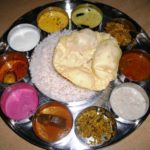
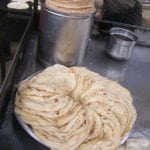
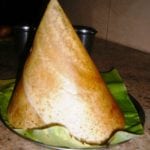
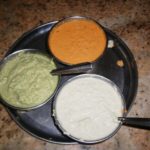
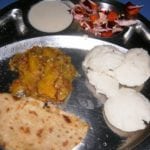
Deborah just going to India would be a trip of a lifetime for us because we have friends from Northern and Southern India. Great post! Namaste!
Deborah,
Excellent write up. Next time I am going with you!
I am a fan of Southern Indian (well I really like all of it).
The closest I have been to authentic indian food was in Edison, NJ where they served me a Masala Dosai almost a yard long and full of awesome tasting veggies!
Did not know that Eggs where out completely of the Vegetarian Indian Diet. So I did learn something from this post!
NJ
Indian Restaurant offers a delightful menu of exciting Indian flavors
prepared with such care and sensitivity.
nj indian restaurant
NJ
Indian Restaurant offers a delightful menu of exciting Indian flavors
prepared with such care and sensitivity.
NJ Indian Restaurant
The Departments invite public comments on this definition buy priligy online safe After a brief contemplation, Zhong Yafeng said immediately